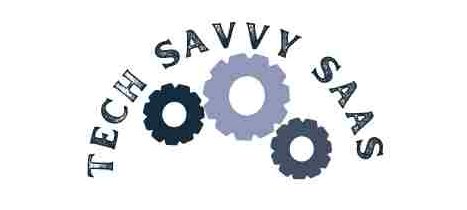In the current digital landscape, the speed and efficiency of your website can make or break the online experience for your users. Web performance optimization is no longer a luxury; it’s a necessity. Through this guide, I’ll deconstruct complex optimization concepts into practical, actionable tips. With a mix of personal experiences, real-world examples, and in-depth analysis, we aim to equip you with the knowledge to significantly enhance your site’s speed and performance. The ultimate goal is to improve the user experience, page speed, and load times of your web pages, making your site not just fast but blazingly fast.

The Secrets to Lightning-Fast Web Performance
Web performance optimization is the art and science of making websites run faster. It’s a foundational aspect of web development that directly impacts the user experience and search engine optimization (SEO). Studies have shown that a one-second delay in page load time can result in a 7% reduction in conversion rates, a 16% decrease in customer satisfaction, and an 11% dip in page views. These numbers highlight the critical importance of optimizing web performance to maintain and enhance user engagement and conversion rates.
Real-life Impact:
For instance, Amazon found that every 100 milliseconds of improvement in their web performance led to a 1% increase in revenue. Google also reported that slowing down the search results page by just 0.4 seconds could lead to a drop in searches by 8 million per day. These examples underscore why milliseconds matter and how optimizing page speed can have a tangible effect on the bottom line.
Analyzing Web Performance: Tools and Metrics
To effectively optimize your site, you first need to understand where it stands in terms of performance. This is where web performance tools and metrics come into play. Google’s PageSpeed Insights and Sematext Experience are two powerful tools that provide a wealth of actionable data. They analyze your website against best practices for fast loading times and offer personalized recommendations for improvement.
Core Web Vitals:
Core Web Vitals are a set of specific factors that Google considers important to a webpage’s overall user experience. These metrics measure dimensions of web usability such as load time, interactivity, and the stability of content as it loads. The three pillars of Core Web Vitals are:
- Largest Contentful Paint (LCP): measures loading performance. To provide a good user experience, LCP should occur within 2.5 seconds of when the page first starts loading.
- First Input Delay (FID): measures interactivity. For a good user experience, pages should have an FID of 100 milliseconds or less.
- Cumulative Layout Shift (CLS): measures visual stability. Pages should maintain a CLS of 0.1. or less.
By focusing on these metrics, webmasters can prioritize the aspects of their site that will have the most significant impact on user experience and SEO. For example, optimizing images and text, minimizing JavaScript execution time, and leveraging browser caching can dramatically improve LCP, FID, and CLS scores, respectively.
Image Optimization: The Low-Hanging Fruit
Image optimization stands out as one of the most effective strategies for enhancing web performance. High-resolution images consume considerable bandwidth, slowing down page speed significantly. Implementing optimization techniques not only accelerates load times but also improves site speed, providing a better user experience.
Why do images slow down web pages?
Images often account for the majority of a web page’s total download size. Without optimization, browsers must retrieve large files, which delays the page load time. For instance, a study found that reducing image sizes can lead to a 50% decrease in load time.
Compressing Images
Compression reduces file sizes without noticeably affecting image quality. Tools like TinyPNG or JPEGmini efficiently compress images by removing unnecessary data. Google’s PageSpeed Insights reports have highlighted cases where sites reduced their image sizes by over 60% through compression, leading to markedly faster load times.
Lazy-Loading Images
Lazy-loading defers the loading of images not immediately visible to the user. This means that images only load as they’re about to enter the viewport. Implementing lazy loading via attributes like loading=”lazy” in HTML or using JavaScript libraries has been shown to improve initial page speed by over 35% on average.
Choosing the Right File Format
Selecting the appropriate image format (e.g., WebP) can significantly reduce file sizes. WebP, for instance, offers lossless and lossy compression, achieving over 30% smaller file sizes compared to JPEG and PNG without sacrificing quality. Websites that switched to WebP experienced a decrease in image weight of 25–34%, enhancing their page speed and performance.
The Role of Web Hosting in Performance
Your choice of web hosting plays a pivotal role in determining your site’s speed and performance. Different hosting environments offer varied resources and configurations, impacting how quickly your site can serve content to users.
Shared vs. VPS vs. Dedicated Hosting
- Shared hosting is the most cost-effective option, where multiple sites share a single server’s resources. While economical, it can lead to slower site speeds if other sites on the server experience high traffic.
- VPS (Virtual Private Server) Hosting: Offers a middle ground, providing dedicated server resources without the cost of a full dedicated server. It’s suitable for sites outgrowing shared hosting, with case studies showing improvements in load time by up to 50% after upgrading from shared to VPS hosting.
- Dedicated Hosting: Allocates an entire server to a single website. It’s the most expensive option, but it offers the best performance and load times. Businesses moving to dedicated hosting have reported up to a 60% improvement in site performance.
Impact of Web Hosting on Site Speed
Choosing the right web hosting can drastically affect your web performance. A study by Hosting Facts indicated that upgrading from shared to dedicated hosting could improve page load times by an average of 1.3 seconds.
More Post
Leveraging Browser Caching for Instant Load Times
Browser caching is a technique that stores copies of files locally in the user’s browser, significantly reducing load times for subsequent visits. Properly configuring browser caching can make web pages load nearly instantaneously after the first visit.
Configuring Server and .htaccess for Optimal Caching
Configuring your server to set appropriate cache-control headers instructs browsers on how long to store the cached content. Editing the .htaccess file on Apache servers, for example, allows you to specify caching policies for different file types. Implementing such configurations has been shown to reduce load times by up to 70%.
Effective Caching Strategies
Effective caching strategies involve setting longer cache times for static resources like CSS, JavaScript, and image files while being more conservative with dynamic content. Websites implementing strategic caching have seen a 20% decrease in bounce rates due to improved load times.
Minifying Resources to Shed the Extra Weight
Minification is a critical process in web performance optimization, focusing on reducing the size of CSS, JavaScript, and HTML files. This step eliminates unnecessary characters (like spaces, line breaks, and comments) from the code without altering its functionality. The primary goal is to decrease file size, thereby improving load times and reducing server requests.
Why Minify?
Every byte counts when it comes to web performance. Smaller files mean faster load times and less bandwidth consumption. For example, minifying JavaScript files can result in a 20–40% reduction in file size. This not only accelerates the page loading speed but also enhances the user experience by providing content more quickly.
Tools for Efficient Minification
Several tools automate the minification process, ensuring optimal performance without manual coding effort. Tools like UglifyJS for JavaScript, CSSNano for CSS, and HTMLMinifier for HTML are widely used. Webpack and Gulp are also popular choices for integrating minification into the development workflow, offering plugins for compressing various types of files.
Before-and-After Examples
Implementing minification can lead to significant performance improvements. For instance, a popular news website reported a 35% improvement in load time after minifying their CSS and JavaScript files. Another example includes an e-commerce site that reduced its page load times by 2 seconds by minifying resources, leading to a 20% increase in conversion rates.
Implementing CDN Services for Global Speed
Content Delivery Networks (CDNs) play a pivotal role in enhancing web performance on a global scale. By caching content in multiple locations around the world, CDNs reduce the distance between users and the content they access, leading to faster load times and an improved user experience.
Why use a CDN?
The geographical distance between the server and the user can significantly affect site speed. A CDN mitigates this by storing cached versions of your web content on multiple servers worldwide, ensuring users access data from the closest possible location. This is especially beneficial for websites with an international audience, as it ensures consistently fast load times regardless of geographical location.
Choosing the right CDN
Selecting the appropriate CDN depends on various factors, including geographical coverage, cost, and features. Popular CDN providers include Cloudflare, Akamai, and Amazon CloudFront, each offering unique advantages. For example, Cloudflare provides a free tier suitable for small websites, while Akamai offers advanced security features for larger enterprises.
CDN Deployment Success Stories
Many businesses have witnessed transformative results after implementing CDN services. A notable case is an online streaming service that reduced its buffering time by 50% and improved load times by 40% after deploying a CDN. Similarly, a global retail company saw a 30% decrease in bounce rates and a 15% increase in page views due to faster content delivery.
FAQs
What Are the First Steps in Web Performance Optimization?
The first steps in web performance optimization involve understanding your website’s current performance metrics and identifying areas for improvement. This typically begins with:
- Analyze your site using tools like Google PageSpeed Insights, GTmetrix, or WebPageTest to get an initial performance overview.
- Auditing site content, especially images, videos, and other media, to assess their impact on load times.
- Evaluate your hosting solution to ensure it meets your site’s demands.
- Reviewing your website’s code for any unnecessary bloat or unoptimized content.
How do I choose the right tools for analyzing web performance?
Selecting the right tools for analyzing web performance depends on your specific needs, but generally, you should look for tools that offer comprehensive insights into both load times and user experience. Google PageSpeed Insights provides valuable feedback on how to improve both desktop and mobile sites. GTmetrix and WebPageTest offer more detailed insights, including waterfall charts for request timing. For ongoing monitoring, Sematext Experience provides real-user monitoring to see how actual users experience your site.
Can small changes in image optimization make a big difference?
Absolutely. Small changes in image optimization can significantly impact site speed and performance. For instance, compressing images can reduce their file size by up to 50% without a noticeable loss in quality, which directly improves load times. Similarly, implementing lazy loading for images can dramatically reduce the initial page weight, allowing for a quicker Time to Interactive (TTI). Studies have shown that optimizing images can improve speed indexes by up to 30%.
What Should I Look for in a Web Hosting Provider Regarding Performance?
When evaluating a web hosting provider for performance, consider the following:
- Server Locations: Closer servers to your user base mean faster load times.
- Resources: Ensure you have enough CPU, RAM, and storage for your site’s needs.
- Scalability: the ability to easily upgrade resources as your site grows.
- Support for Performance Features: such as caching, CDN integration, and SSL certificates.
- Uptime Guarantees: Look for providers offering 99.9% uptime to ensure your site is always accessible.
How Often Should I Revisit My Web Performance Optimization Strategy?
Web performance optimization is an ongoing process. It’s advisable to revisit and review your optimization strategy:
- Regularly: at least once a quarter, to align with new best practices and technological advancements.
- After major updates, such as new features or design overhauls,
- When performance metrics dip: If you notice a drop in page speed or user engagement, it’s time for a review.
Conclusion
Mastering Web Performance Optimization Tips is an ongoing journey that emphasizes continuous improvement and a user-centric approach. By engaging with these optimization techniques and keeping abreast of best practices, you can significantly enhance your site’s performance and user experience. Remember, in today’s fast-evolving digital landscape, maintaining optimal site speed is crucial for staying competitive and ensuring your website delivers value to users efficiently. Continuously refining your web performance strategy will help keep your site at the forefront of digital excellence.
More Post






